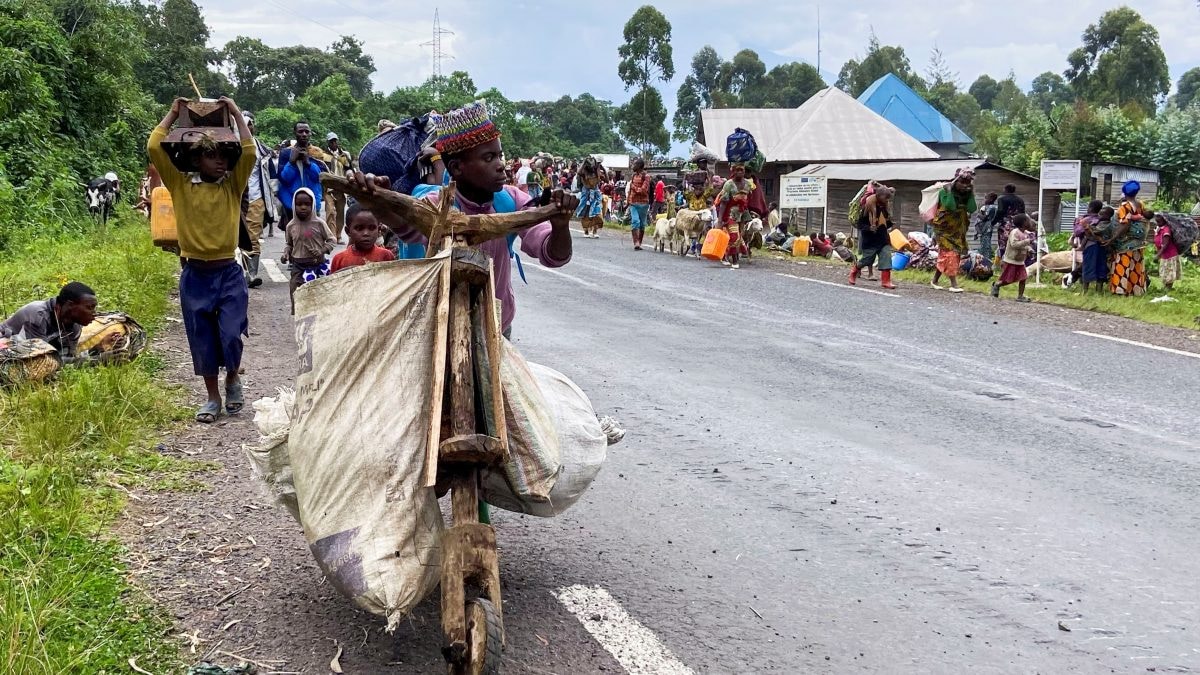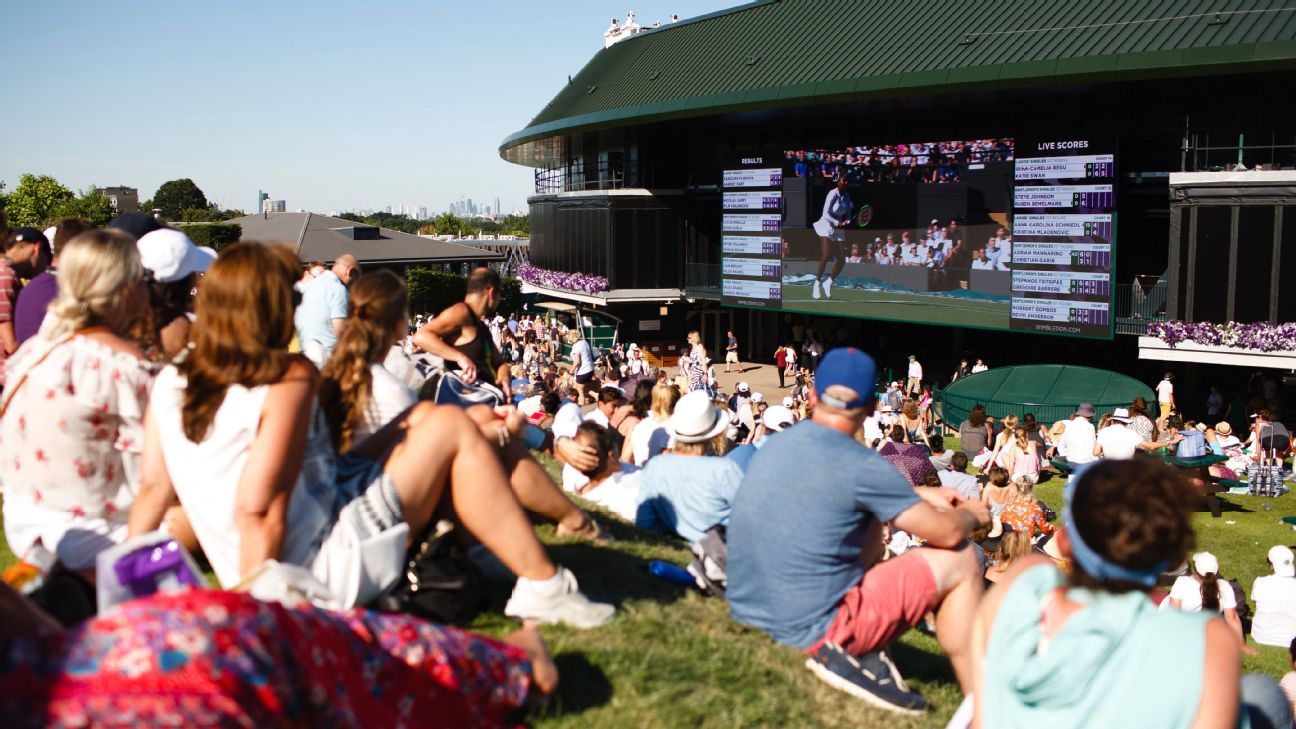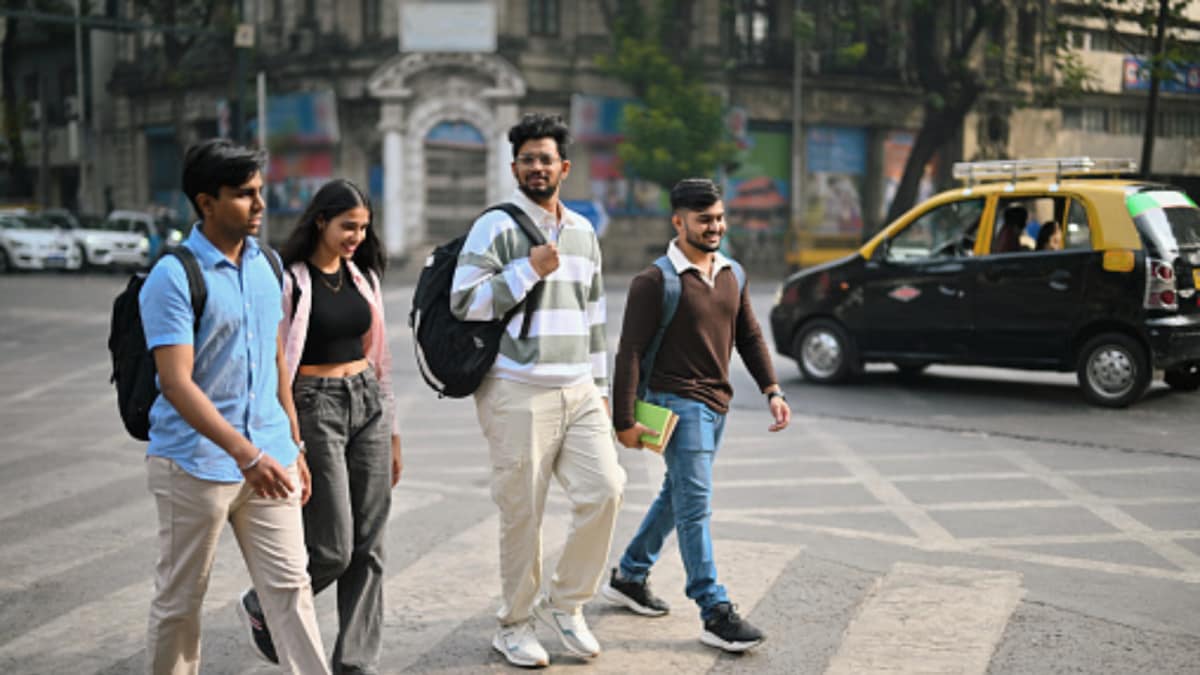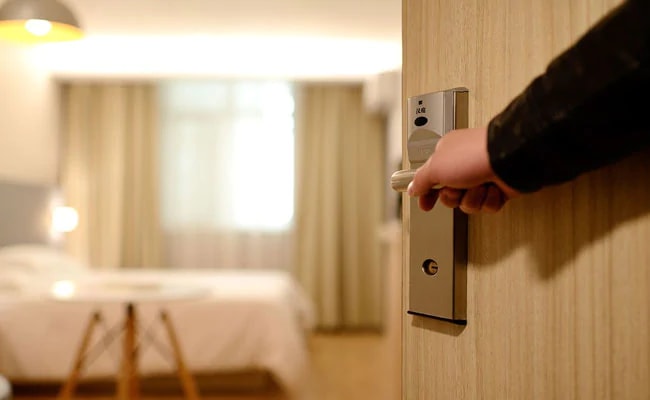How an Eater Editor Spends a Dreamy Weekend on South Korea’s Jeju Island
“The one thing you’ll notice is that it’s really windy,” my mother said as we took off from Seoul’s Gimpo Airport this past spring. We were on our way to Jeju, the island destination off the southern tip of the Korean Peninsula, accompanied by my wife and 2-year-old son. It was my first time visiting […]


“The one thing you’ll notice is that it’s really windy,” my mother said as we took off from Seoul’s Gimpo Airport this past spring. We were on our way to Jeju, the island destination off the southern tip of the Korean Peninsula, accompanied by my wife and 2-year-old son. It was my first time visiting the island, but my mom had been half a dozen times with my dad before he passed away in 2021; they went whenever they wanted a break from bustling Seoul, where they were both born, or from Southern California, where they moved in the 1970s. It was the ultimate getaway.
Though I’d traveled throughout South Korea, Jeju always felt like a fabled land, sunny and warm at times, rainy and blustery at others, but endlessly romantic. It’s easily the most popular vacation spot for South Koreans. The flight route between Seoul and Jeju carries the most passengers in the world; on any given day, a plane takes off every seven to eight minutes. Jeju’s fame outside of South Korea has grown recently with shows like Hyori’s Bed and Breakfast (a super-chill reality show about people staying at the K-Pop star’s actual vacation home) and Netflix’s When Life Gives You Tangerines, a sappy coming-of-age drama starring yet another pop star, IU.

The culinary nods in those series titles give a hint to the island’s famed food. Surrounded by a bountiful ocean, Jeju depends heavily on seafood. Haenyeo, legendary free-diving women, hunt for abalone, urchins, and sea snails; they’ve developed an international reputation thanks to Japanese Breakfast singer Michelle Zauner, who wrote a song about them, and Eater’s own James Beard-nominated coverage, but they also embody the resilience of Jeju culture against the mainland (even my mom has difficulty understanding their dialect). A distinct, moderate climate and eons of activity by the island’s towering volcano, Mount Halla, have also made Jeju a fruitful place for raising all manner of agriculture and livestock, namely pigs.
One long weekend isn’t enough time to fully experience the island, which is about the size of Maui and requires up to an hour to drive across in any direction. Because we stayed at the towering Grand Hyatt in Jeju City instead of the more popular southern city of Seogwipo, most of our adventures were inland and scattered across the Western side.
No matter where you stay or visit, the island provides opportunities to eat well in virtually every corner. There are cute cafes for matcha- or coffee-tinted drinks, homestyle restaurants offering bubbling stews and banchan, sleek barbecue spots serving Jeju black pig sliced over tabletop grills, seafood establishments turning out all manner of raw, grilled, and braised shellfish and fish, and rustic markets selling pristine produce and fried street food. The island abounds with incredible food, so trips long or short will include plenty of highlights.
Note: The easiest way to get around is by rental car, which requires an international driver’s license. Addresses for each venue below are presented in Korean so they can be plopped into a Korean-language navigation app like Naver.

Homestyle soups to revive the weary: Modajeong Haejangguk
After a day of travel from LA (and a day lost to the time difference), we were in desperate need of a comforting, traditional Korean meal as soon as we landed on Jeju. We walked half a block behind the Grand Hyatt for a quiet mid-afternoon meal at Modajeong Haejangguk, a mom-and-pop restaurant filled with weathered tables, mismatched fans, and air conditioners. After reviewing the compact menu posted on the wall, we nibbled on nine types of banchan (including kimchi, lightly dressed soft tofu, candied anchovies, potato salad, and bean sprouts) until our meals arrived.
After a long trip, nothing hits better than seolleongtang (profoundly sustaining beef bone soup) or haejangguk (a thrilling hangover cure with wilted cabbage leaves and chunks of coagulated pork blood). We also ordered godeungeo gui: pan-fried, extra-long mackerel (also called Korean seerfish) that boasted a luxurious texture, oily but not the least bit fishy. We scarfed down the fish, which were roasted a golden brown and served on an iron plate, until we’d picked the last bit of flesh from the bones.
Address: 제주 제주시 원노형6길 12

A destination for kids (and udon): Arte Kids Park
South Korea is more known for its dismal birthrate than its amenities for children, but when the country does have something for kids, it’s world-class. The Arte Kids Park, a 20-minute drive from Jeju City, offers an immersive and extremely clean play experience for little ones. Upstairs, there’s an adorable elementary school-style cafeteria with snacks, where we ordered a simple bowl of udon in odeng (fish cake) broth for our 2-year-old. Other dishes include jjajangmyeon (black bean noodles), tonkatsu, corn dogs, and fried rice. My favorite part was the well-organized array of utensils, metal cups, and other eating materials tucked into heated cases to protect against germs. A lot of play spaces I’ve experienced in America are kind of gross, so seeing this pristine haven in Jeju was itself a marvel (and the udon noodles were pretty tasty too).
Address: 929 Wolgak-ro, Aewol-eup, 특별자치도, Jeju-si, Jeju-do, South Korea

A perfect roadside lunch: Donggwang Guksu
After leaving Arte Kids Park, our son fell asleep, which meant I needed to find myself a grown-up meal. Jeju’s famous black pigs provide the island with ingredients for some of the best pork dishes in South Korea. I found this tiny roadside spot popular with golfers, and while my wife stayed with our son in the car, I bopped into the restaurant for a quick bowl of dwaeji guksu. The milky broth was sweet from the pork bones, making a great medium for simple wheat noodles and bite-sized pork belly slices. A tangle of sliced Korean scallions brought in a heady allium aroma, while seasoned radish shoots and short-fermented kimchi acted as the only sides. It reminded me a bit of Hakata-style ramen, with slightly chewy thin noodles and bites of meaty pork, and the simple broth was my favorite part. I spied a bottle of Jeju tangerine-flavored makgeoli in the fridge and wished I didn’t have to drive, but otherwise it was a satisfying lunch just off the main highway.
Address: 방문자 리뷰 86블로그 리뷰 15

A Spicy Seafood Feast: Jeju Madang
I made it a point to try the popular galchi (belt fish, aka largehead hairtail), a silvery swordlike creature with elegant, flaky flesh. This popular seafood restaurant near the coast serves a twofer of spicy braised belt fish and whole-grilled belt fish. The braised version, also called jorim, comes in a big steel stainless box containing whole abalones, chopped octopus, rounds of radish, rice cakes, shrimp, and onions; a camping stove placed underneath the box keeps the fiery red chile broth simmering, reducing the liquid to a thick, sweet, salty, spicy sauce. Admittedly, eating belt fish requires picking out dozens of tiny bones, but it’s worth the effort. The grilled version, which tastes of Dover sole, is a little easier to handle. Banchan of well-fermented kimchi, tiny anchovies, and even ganjang gaejang (raw soy-marinated crab) provide punches of umami between the spicy braised fish and the pan-grilled variant.
Address: 제주 제주시 도리로 50 2층

A walking tour of fried pancakes and corn dogs: Jeju Five Day Folk Market
The Five Day Folk Market in Jeju City opens on days ending in 2 or 7 (so each month on the second, seventh, 12th, and so on). We happened to catch it on a Sunday, when we had to fight for a free parking spot before entering. Walk through the sprawling semi-covered emporium for all manner of food, produce, clothing, and electronics. We picked up multiple varieties of Jeju gamgyul (tangerines), which lived up to their reputation as the finest citrus in the world, even out of peak season. The main hallabong variety is excellent — fragrant, sweet, tangy, and balanced — while the cheonhyehyang variety has thinner skin but a juicy flavor that’s so sweet it hurts your teeth. We also snacked on piping hot hotteok: molten sugar-filled pancakes fried in butter. Just before heading out, we picked up a ketchup-laced corn dog fresh out of the fryer: a smoky, meaty wiener in a panko crust that was far better than anything at an American theme park.

A worth-it tourist trap: Osulloc Tea Museum
Osulloc is a big touristy tea farm and museum with a slick retail cafe serving matcha drinks and desserts. The day we went, the place seemed almost overrun. The classic steeped tea — brewed for exactly two minutes according to a tiny hourglass timer — was my favorite, a mellow, toasty sip whose aromas were amplified by the gourd-sized cup. On the more saccharine side, a cream-topped wedge of moist green tea cake was cut into a shape meant to recall Jeju’s Mount Halla, while swirled soft serve ice cream blended yet more matcha with a simple sweet cream. The white-and-brown boricaeyeok spanner (green tea matcha floated over sweet barley tea) was probably the one to skip.
After overloading on sugar, we headed to the tea fields for photo ops. My son found it hilarious to run through lanes of tea bushes that were too narrow for adults to chase him.
Address: 15 Sinhwayeoksa-ro, Andeok-myeon, 특별자치도, Seogwipo-si, Jeju-do, South Korea

The greatest pork barbecue in the world: Crown Pig
Of all our meals on Jeju, I was most excited to try the island’s famed black pigs, designated a heritage breed in 2015. Chef Hoon Song of Crown Pig carefully butchers the best-quality pigs and ages them to amplify their distinct, tender flavor, before lightly smoking the pork in applewood and oak. His somewhat isolated restaurant looks like a traditional Korean barbecue spot, with tables centered around steel pan grills, where servers handle most of the cooking.
We opted for the Combination C, which comes with a pork tomahawk, arm shoulder, pork belly, and Boston butt for 99,000 won (about $70). Servers snip the rich, glistening pork with scissors as it cooks on the pan, allowing some fat to run off but keeping plenty of fatty chunks on the meat. Taking a bite, there’s a gentle whiff of smoke followed by the most ethereal, tender pork that almost crumbles on the palate. The sensation isn’t that different from a well-seared piece of wagyu beef, but with a juicy porcine sweetness that’s distinct from almost all American pork. (There simply is no equal, and I’ll fight someone on that.) The experience is heightened with chopstick dabs of ssamjang (fermented bean paste), grated wasabi, fine sea salt, and gochujang that add bursts of savory flavor. We wrapped our bites in fresh green lettuce or mounds of shredded scallions dressed in a red chile sauce.
Korean barbecue might be known more globally for its tabletop grilled beef, but Jeju pork might better represent the spiritual zenith of the genre.
Address: 특별자치도, 애월읍 애월읍 상가목장길 84

A market even better than H Mart: Emart
After a few days eating through South Korea’s favored vacation destination, there’s nothing better than strolling through a well-organized Korean supermarket for snacks to take home.
Anyone who’s enjoyed visiting a Korean grocery store in the U.S. should check out a Lotte Emart in South Korea. The location in Jeju City has some handy and affordable souvenirs to take home, including tangerine-flavored confections that are unique to Jeju. While you can find soju bottles from the more industrial brands like Jinro or Chamisul for around a dollar, there are also more expensive beverages, like the Asia-only crystal bottle of Suntory Kakubin blended whisky, which reminds me of Bill Murray in Lost in Translation (“For relaxing times…”).
The hot foods section had handmade dumplings, pan-fried and boiled, while all manner of kimchi (napa cabbage, garlic chives, etc.) were displayed in the refrigerated areas. Those wouldn’t necessarily travel well (though my mom likes to bring huge bundles of fresh banchan back to LA), but the rows of Korean candies (Koreans are particularly good at making coffee-flavored hard candies), chocolates, crispy snacks, and other sweets certainly would.
Address: 제주특별자치도 제주시 탑동로 38















































































































































































